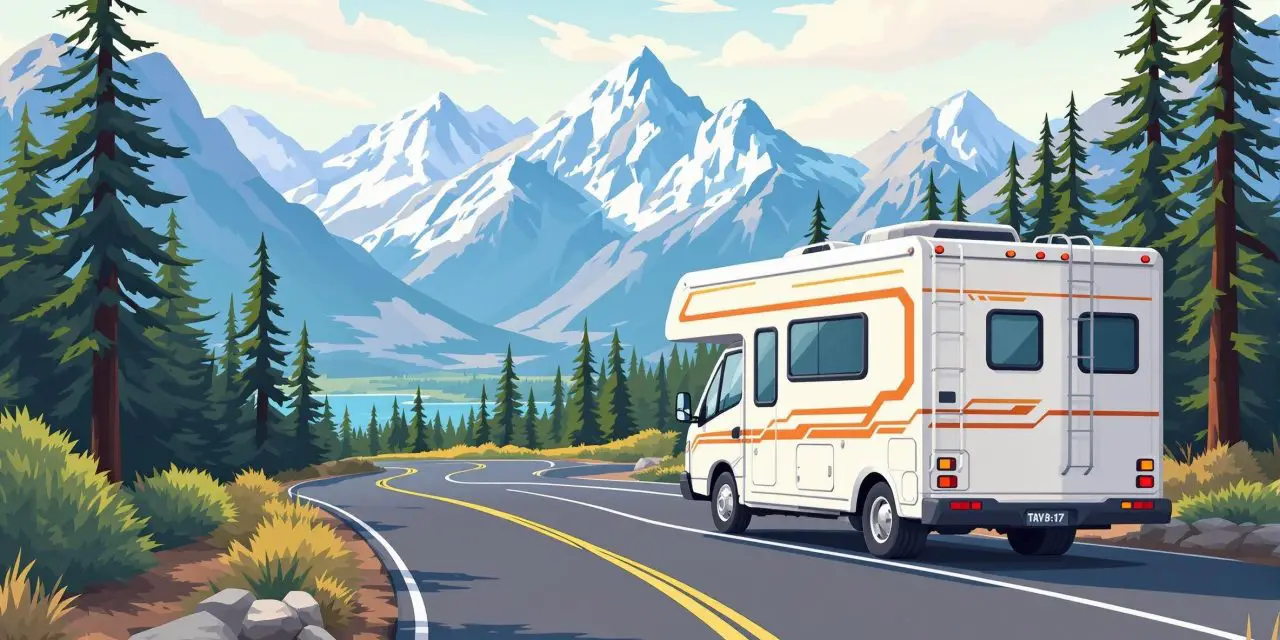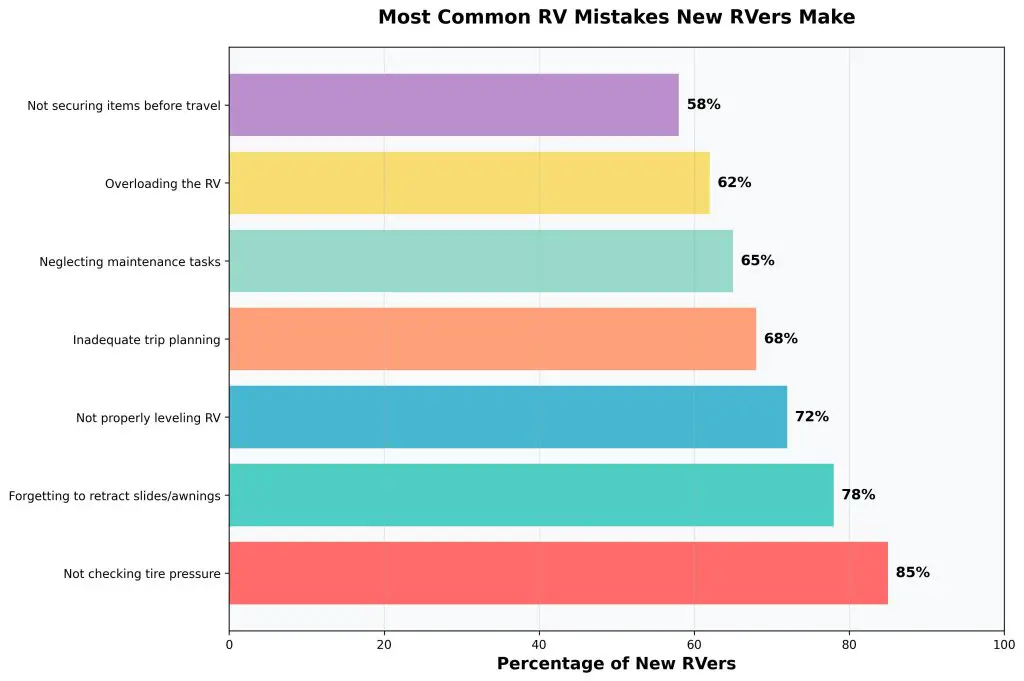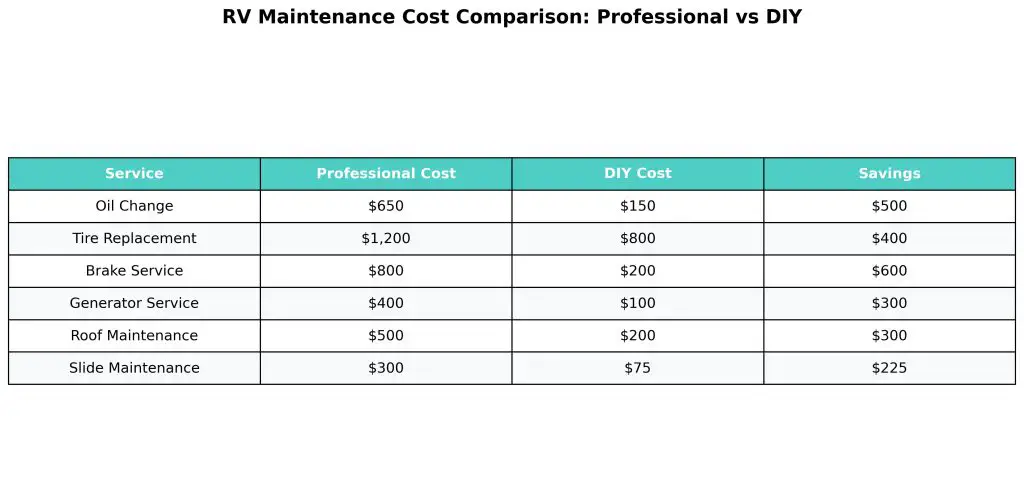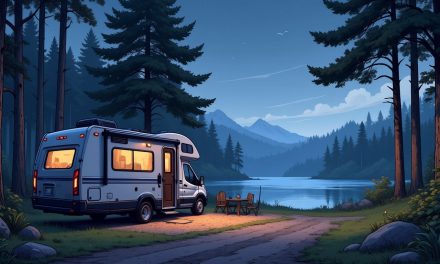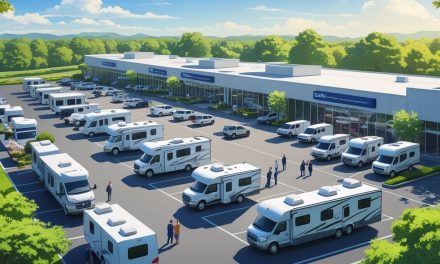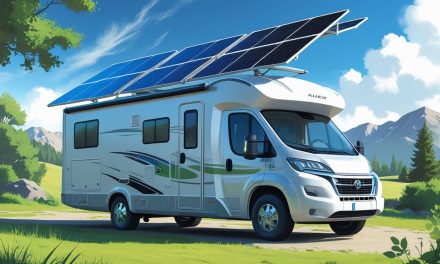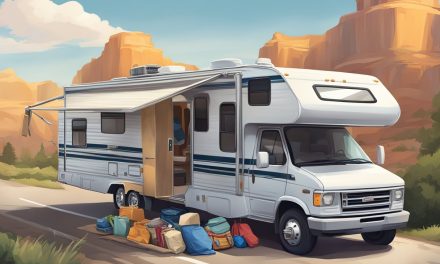Would you like to save this article?
You’ve just upgraded to your dream RV and you’re feeling confident about hitting the open road. But wait – even the most experienced RVers can get humbled by their motorhome when overconfidence meets reality. In this article, we’re diving into the hard-learned lessons from the YouTube channel “Endless RVing” and their recent wake-up call with their 44-foot Newmar Stella.
You’ll discover the most common mistakes that can turn your dream vacation into a nightmare, plus the insider tips that’ll keep you rolling smoothly down the highway.
Whether you’re a weekend warrior or planning to go full-time, these lessons will help you avoid the rookie mistakes that cost thousands of dollars and countless hours of frustration. Get ready to learn from other people’s mistakes so you don’t have to make them yourself!
1. The Learning Curve Is Real – Even for Experienced RVers
Getting out of your own driveway shouldn’t take 90 minutes, but that’s exactly what happened to Jason and MJ from Endless RVing when they first took their new 44-foot Newmar Stella for a spin. The couple, who had years of experience with their previous 37-foot motorhome “Nelly,” discovered that size really does matter when it comes to RV maneuvering.
The statistics are staggering: 85% of new RVers admit to not properly checking their setup before departure, and 78% have forgotten to retract slides or awnings at least once. These aren’t just minor inconveniences – they’re potentially dangerous and expensive mistakes that can ruin your entire trip.
The reality check: What used to be a simple backing maneuver became a precision operation requiring four major turns in tiny spaces with only inches to spare. By their second departure, they’d cut their exit time from 90 minutes to just 24 minutes – proving that practice really does make perfect.
You know what they say about assumptions – they make an “ass” out of “u” and “me.” Well, in the RV world, assumptions can also make your wallet significantly lighter and your stress levels significantly higher.
2. Professional Knowledge Beats YouTube University Every Time
Dave from Dave’s RV Center in Danbury, Connecticut, provided Jason and MJ with invaluable hands-on education about their Newmar coach that they simply couldn’t get from online research. This highlights a crucial point: there’s no substitute for learning from professionals who specialize in your specific RV brand.
According to industry data, the RV industry has an economic impact of $140 billion on the US economy, supporting nearly 680,000 jobs. With 11.2 million RV-owning households in the US as of 2024, the demand for knowledgeable service providers has never been higher.
Dave’s expertise saved them from costly mistakes by showing them:
- Location of drain plugs for air tanks
- How to change oil and filters
- Hydronic heating system maintenance
- Access panels and hidden components
- Proper diagnostic procedures
The knowledge gap: Many RVers spend thousands on their rigs but skimp on professional education, leading to expensive repairs that could have been prevented with proper knowledge.
Think of it this way: you wouldn’t perform surgery on yourself after watching a few YouTube videos, so why would you trust your $200,000+ investment to amateur hour?
3. The $650 Oil Change Wake-Up Call
Nothing makes you appreciate DIY skills quite like getting hit with a $650 oil change bill. Jason’s reaction was immediate and decisive: “I’m not paying $650 for an oil change – I’ll be doing that myself.” This experience perfectly illustrates why understanding your RV’s maintenance needs is crucial for long-term ownership success.
The maintenance cost differences between professional service and DIY are substantial:
Key maintenance locations Dave showed them:
- Oil filter location and access
- Drain plug positioning
- Fuel water separator drainage
- Air filter replacement points
- Hydronic system components
The maintenance reality: Regular maintenance on a diesel motorhome can cost $3,000-$5,000 annually when done professionally, but drops to $1,000-$2,000 when you handle basic tasks yourself.
I guess you could say that $650 oil change really “filtered” out Jason’s willingness to pay professional rates for basic maintenance. Sometimes the best education comes with the highest price tag!
4. Small Upgrades Make Big Differences
The devil is in the details, and Jason and MJ learned this through several small but significant upgrades and fixes during their visit to Dave’s RV Center. These weren’t glamorous improvements, but they addressed real functionality issues that could have caused problems down the road.
Completed improvements:
- Cracked vent cowling replacement
- Bent wiper arm straightening
- Courtesy light repair
- Vacuum kick panel fix
- Custom step covers installation
- Fresh water tank sensor diagnosis
The upgrade philosophy: Small problems become big problems when ignored, and catching issues early saves both money and frustration on the road.
Statistics show that 65% of RVers neglect routine maintenance tasks, leading to more serious issues later. The key is addressing problems when they’re still minor inconveniences rather than major breakdowns.
You might think these little fixes are no big deal, but try explaining to your spouse why the bedroom light doesn’t work when you’re trying to pack up at 6 AM for an early departure. Suddenly, that $20 courtesy light bulb becomes priceless!
5. The Parking Brake Safety Game-Changer
One of the most eye-opening moments came when subscriber Jim Stafford introduced them to the “Stop Knob” – a simple device that prevents accidental engagement of the parking brake. This small accessory addresses a serious safety concern that many RVers never consider.
The problem: Diesel motorhomes don’t have a traditional park gear – they rely entirely on air brakes. If a pet or child accidentally pushes the brake knob, you’ve got 45,000 pounds of rolling metal with no way to stop it.
The solution: The Stop Knob creates a physical barrier that prevents accidental brake disengagement while still allowing normal operation when needed.
Safety statistics: According to RVIA data, human error accounts for 23% of RV accidents, with mechanical failures (often related to improper operation) contributing to another 31%.
The installation: Simple spring-loaded replacement that takes less than 5 minutes to install and provides invaluable peace of mind.
Some might call it overthinking, but I call it “underthinking” when you don’t consider what happens when Fluffy decides to explore the driver’s area while you’re setting up camp!
6. The Dishwasher Experiment and Full-Hookup Luxury
After all the learning and repairs, Jason and MJ decided to test their motorhome’s dishwasher for the first time on the road. This seemingly simple decision highlights an important aspect of RV ownership: you don’t really know your rig until you’ve used all its features under real conditions.
The full-hookup advantage: Having access to water, sewer, and electrical connections removes the anxiety about resource conservation and allows you to truly test your RV’s capabilities.
Industry insight: Only 31% of RVers regularly use all the appliances in their rigs, often due to concerns about water usage, power consumption, or simply not knowing how to operate them properly.
The testing mindset: Each trip should include experimenting with different systems and features to build confidence and identify potential issues before they become problems.
Resource management: Understanding your RV’s systems helps you make informed decisions about boondocking versus hookup camping based on your actual needs rather than fears.
It’s funny how a simple dishwasher can become the ultimate luxury when you’re used to washing everything by hand in a tiny sink. Sometimes the best parts of RV life are the ones that remind you of home!
7. The Continuous Learning Journey
Perhaps the most important lesson from Jason and MJ’s experience is that RV ownership is a continuous learning process. Even experienced RVers face new challenges when they upgrade or change rigs, and the willingness to learn from others can save tremendous time, money, and frustration.
The learning sources:
- Knowledgeable dealers and service centers
- Fellow RVers and online communities
- Manufacturer training and resources
- Professional service technicians
- Trial and error (preferably minimal error!)
The mindset shift: From “I should know this” to “I’m excited to learn this” makes all the difference in your RV journey.
Investment in education: Spending money on professional consultation and training pays dividends in reduced repair costs, increased safety, and greater enjoyment of your RV lifestyle.
The compound effect: Each piece of knowledge builds on the previous ones, creating a foundation of competence that makes RV ownership genuinely enjoyable rather than constantly stressful.
After all, the best RV trips are the ones where you’re learning something new while everything else works perfectly – kind of like life, but with better views and fewer traffic jams!
WordPress Featured Image
SOURCES
- Endless RVing YouTube Channel – “Overconfident & Underprepared — This RV Trip Taught Us A LOT!”
- RVIA Industry Reports – RV Industry Economic Impact and Statistics
- RV LIFE Magazine – Common RV Beginner Mistakes
- Roadtrippers RV Guide – Beginner RV Mistakes to Avoid
- Consumer Affairs RV Statistics – 2024 RV Industry Data
- Go RVing Industry Facts – RV Ownership Statistics
- Dave’s RV Center, Danbury Connecticut – Professional RV Service and Sales
- RV Snap Pad – RV Jack Pad Solutions
- Stop Knob Safety Device – RV Parking Brake Safety
- Harvest Hosts – RV Overnight Parking Network

